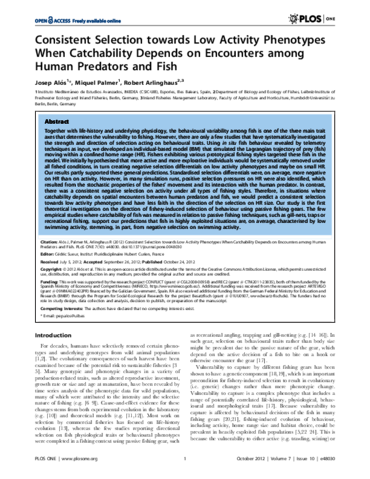Together with life-history and underlying physiology, the behavioural variability among fish is one of the three main trait axes that determines the vulnerability to fishing. However, there are only a few studies that have systematically investigated the strength and direction of selection acting on behavioural traits. Using in situ fish behaviour revealed by telemetry techniques as input, we developed an individual-based model (IBM) that simulated the Lagrangian trajectory of prey (fish) moving within a confined home range (HR). Fishers exhibiting various prototypical fishing styles targeted these fish in the model. We initially hypothesised that more active and more explorative individuals would be systematically removed under all fished conditions, in turn creating negative selection differentials on low activity phenotypes and maybe on small HR. Our results partly supported these general predictions. Standardised selection differentials were, on average, more negative on HR than on activity. However, in many simulation runs, positive selection pressures on HR were also identified, which resulted from the stochastic properties of the fishes’ movement and its interaction with the human predator. In contrast, there was a consistent negative selection on activity under all types of fishing styles. Therefore, in situations where catchability depends on spatial encounters between human predators and fish, we would predict a consistent selection towards low activity phenotypes and have less faith in the direction of the selection on HR size. Our study is the first theoretical investigation on the direction of fishery-induced selection of behaviour using passive fishing gears. The few empirical studies where catchability of fish was measured in relation to passive fishing techniques, such as gill-nets, traps or recreational fishing, support our predictions that fish in highly exploited situations are, on average, characterised by low swimming activity, stemming, in part, from negative selection on swimming activity.
Consistent selection towards low activity phenotypes when catchability depends on encounters among human predators and fish
Peer-reviewed

Alós, J., Palmer, M., Arlinghaus, R. (2012). Consistent selection towards low activity phenotypes when catchability depends on encounters among human predators and fish. PLoS ONE, 7, e48030
Published
: 2012
Appeared in
: PLoS ONE, 7, e48030
